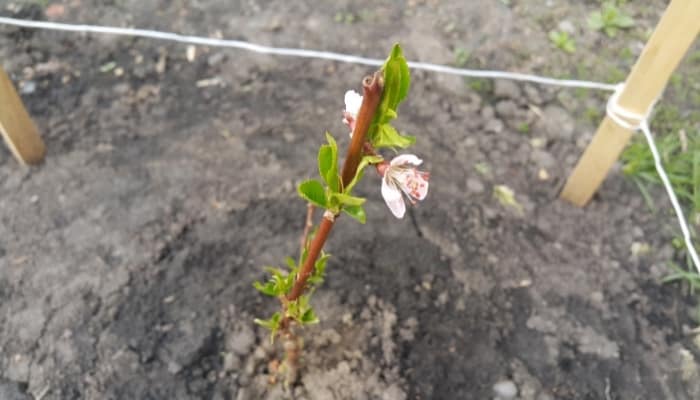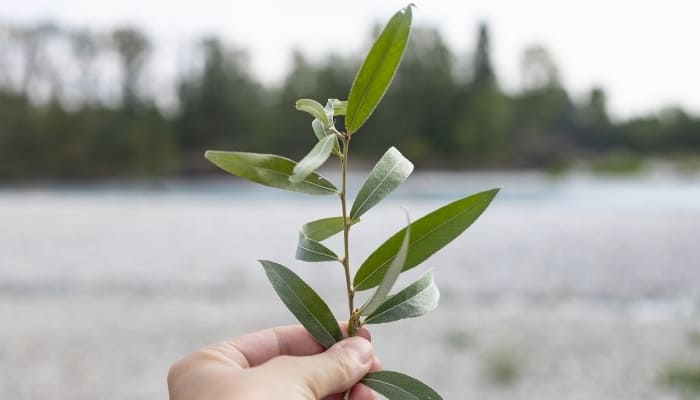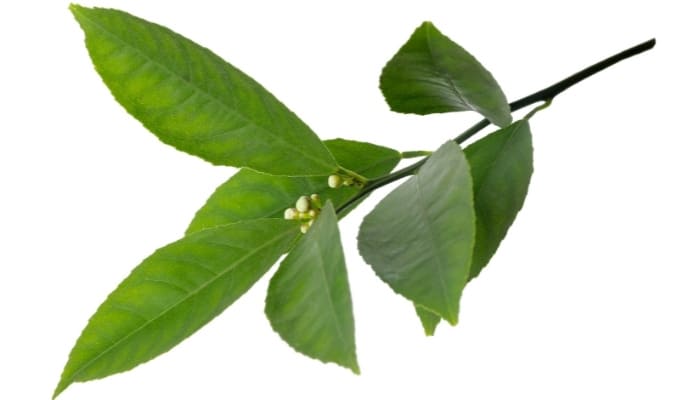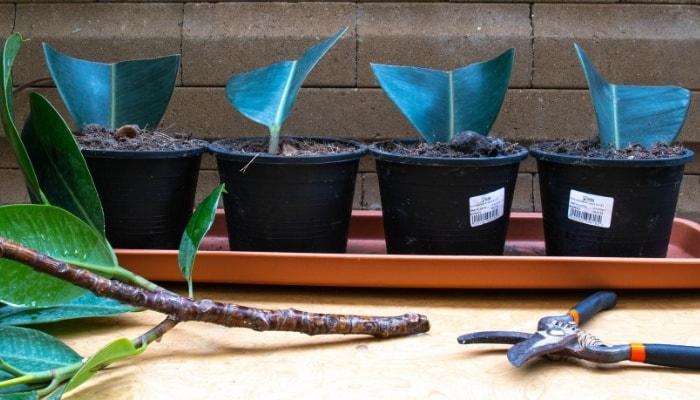It is a cost-effective and efficient method to duplicate trees by propagating them from cuttings, as opposed to more time-consuming methods like air layering or growing from seeds.
Taking cuttings from the trees you want to clone is quick, easy, and practically guarantees a healthy new tree.
But, unfortunately, not every tree in the world is ideal for cloning via cuttings.
Fruit trees such as apples and pears are capable of being grown from cuttings, as are many deciduous trees such as maples and oaks. Further, numerous evergreen tree species can also be grown from cuttings. Other popular trees to grow from cuttings include Fig, Locust, Olive, Juniper, and Willow, and most Citrus trees.
Read on below to learn exactly which trees you can grow from cuttings, and how to actually take a cutting and root it!
Best Fruit Trees To Grow From Cuttings

Apple tree cutting blossoming. Fruit trees are extremely popular to grow from cuttings. Depending on the species, they aren’t usually the hardest to root from cuttings either. But, they are best cut in the early spring and won’t put off fruit for at least two or three years (if not four or five).
The best fruit trees to grow from cuttings include:
- Apple
- Apricot
- Blueberry
- Cherry
- Currants
- Elderberry
- Gooseberry
- Peach
- Pear
- Plum
- Quinces
Want to start with a more mature tree? I highly recommend the trees from Fast Growing Trees. The best part…they ship right to your door!
Buy Trees Online – Fast Growing TreesShop FastGrowingTrees.comChoose from Thousands of Trees & Plants, Delivered with Care, Directly to Your Home.
- Indoor/Outdoor
- Fruit/Flower
- Privacy/Decorative
- and more!
Best Deciduous Trees To Grow From Cuttings

Freshly cut willow tree cutting.
Deciduous trees are among the friendliest species to grow from cuttings, and thankfully so. These typically big and beautiful trees normally flower and add enormous aesthetic value to homes and gardens.
The best deciduous trees to grow from cuttings include:
- Ash
- Aspen
- Beech
- Birch
- Cottonwood
- Elm
- Mahogany
- Maple
- Oak
- Poplar
- Redbud
- Tulip
- Willow
Best Evergreen Trees To Grow From Cuttings

Fresh cutting from a citrus tree.
Evergreens are often considered difficult trees to clone due to how thin and brittle many of their branches are. The fact that their branches break easier, and are more prone to drying out than other species, gives them the “honor” of being one of the hardest types of trees to grow from cuttings.
The best evergreen trees to grow from cuttings include:
- Cedar (specifically red cedar)
- Citrus
- Cypress
- Fir
- Hemlock (especially western and mountain)
- Holly
- Juniper
- Live Oak
- Pine
- Spruce (especially blue or black)
- Tsuga
Growing Trees From Cuttings: Basic Steps
Taking cuttings from trees for the purpose of cloning is super simple, literally, anyone can do it.
But, before you get started, you need a few supplies:
- A tree to take the cutting from
- A sharp pair of cutters
- Rooting hormone (or cinnamon)
- A container that holds water
- A plastic sheet or a piece of foam
1. Select a Proper Tree Branch
For the size tree you want, the size tree branch that works best for your cutting varies. Tree branches that are less than a year old make the best identical clones.
Two and three-year-old tree branches are capable of growing new trees, but the success rate isn’t as high as with younger branches.
Also, the older the tree branch is less likely for the new tree to be identical to the parent.
2. Measure the Branch
Depending on the species, the best tree branches for cuttings range in size from six to ten inches (all the way up to two to three feet in length) with a diameter similar to that of a pencil.
As you are taking your measurement, mark where you will cut it by notching the bark (or using a market).
3. Carefully Take Your Cutting
With a sharp utensil, preferably a pair of prunes, snippers, clippers, or heavy-duty garden scissors (the main point is that you use a very sharp tool). The sharper the tool, the cleaner the cut.
Cut the base of the branch, on your mark, at a 45° angle. That way the bottom of the cutting is wider. This is important as it allows the cutting to take up more water and shoot out more roots.
4. Strip the Cutting of Leaves and Buds
With the same sharp tool you use for cutting the branch free of its parent, carefully snip, clip, or cut each leaf and bud.
When taking tree cuttings, it’s best practice to remove all of the leaves (save for a few little bitty ones at the very end of the whip, if you prefer).
5. Dip the Cuttings and Stick them in Water
Immediately after cutting the branches, dip them into pre-prepared rooting hormone. If you prefer the organic route, dip them in prepared cinnamon powder.
Either way you decide to go, you’re giving the fresh cutting a better chance to successfully sprout new roots.
That said, you can skip the rooting hormone and cinnamon altogether and still come out with a healthy clone in many cases.
Whether or not you dip your cuttings, or what you dip them with, stick them directly into clean pre-pared water.
6. Alternatively, Dip the Cuttings and Stick them in Wet Dirt
Not everyone prefers to grow their cuttings in water. Some gardeners prefer sticking their fresh cuttings into extremely moist potting soil.
In this method, the new cuttings, and their soil, is kept soaking wet for the next two to three weeks.
Typically, the cuttings begin to form roots shortly after and the growing medium’s heavy moisture level is reduced. Once the root system appears, watering is only necessary once per week to continue its growth
Related Questions
How Long Does It Take for Tree Cuttings To Root?
Many tree cuttings develop new roots within three to four weeks, but some species may require an additional couple of weeks. The time of year also affects how long rooting takes to occur. Early spring and late fall, or early winter, are the most effective times for taking cuttings.
How Do You Know If My Cuttings Have Rooted?
If you’re rooting your cuttings in water, simply take a peek into the container holding them. For rooting cuttings in soil, when the cutting begins offering resistance to your gentle tugging it means that a root system is forming.
Closing Thoughts on Which Trees to Grow From Cuttings
There is no shortage of trees to grow from cuttings. Hopefully the information above, as well as the lists of great tree species to choose from, helps you make the most well-informed decision possible as to which trees to grow from cuttings in YOUR home and garden!


